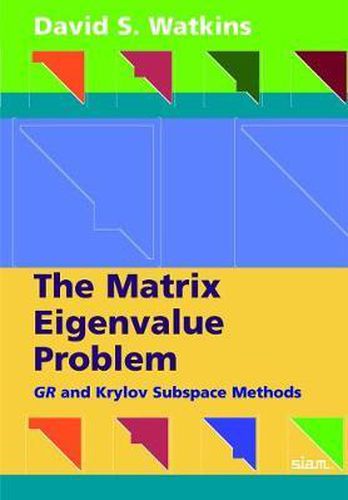Readings Newsletter
Become a Readings Member to make your shopping experience even easier.
Sign in or sign up for free!
You’re not far away from qualifying for FREE standard shipping within Australia
You’ve qualified for FREE standard shipping within Australia
The cart is loading…






The first in-depth, complete, and unified theoretical discussion of the two most important classes of algorithms for solving matrix eigenvalue problems: QR-like algorithms for dense problems and Krylov subspace methods for sparse problems. The author discusses the theory of the generic GR algorithm, including special cases (for example, QR, SR, HR), and the development of Krylov subspace methods. This book also addresses a generic Krylov process and the Arnoldi and various Lanczos algorithms, which are obtained as special cases. Theoretical and computational exercises guide students, step by step, to the results. Downloadable MATLAB programs, compiled by the author, are available on a supplementary Web site. Readers of this book are expected to be familiar with the basic ideas of linear algebra and to have had some experience with matrix computations. Ideal for graduate students, or as a reference book for researchers and users of eigenvalue codes.
$9.00 standard shipping within Australia
FREE standard shipping within Australia for orders over $100.00
Express & International shipping calculated at checkout
The first in-depth, complete, and unified theoretical discussion of the two most important classes of algorithms for solving matrix eigenvalue problems: QR-like algorithms for dense problems and Krylov subspace methods for sparse problems. The author discusses the theory of the generic GR algorithm, including special cases (for example, QR, SR, HR), and the development of Krylov subspace methods. This book also addresses a generic Krylov process and the Arnoldi and various Lanczos algorithms, which are obtained as special cases. Theoretical and computational exercises guide students, step by step, to the results. Downloadable MATLAB programs, compiled by the author, are available on a supplementary Web site. Readers of this book are expected to be familiar with the basic ideas of linear algebra and to have had some experience with matrix computations. Ideal for graduate students, or as a reference book for researchers and users of eigenvalue codes.